My Very Best Packing Tips – Packing 101: How to Stay Organized on a Multi-City Trip by Using Packing Cubes, Containers, Organizers, Packing Accessories and Packing Hacks. My Best Packing Tips to Stay Super Organized on Your Travels!
Disclosure: This Where to Stay in Florence Guide contains affiliate links. That means we earn a commission when you use the links on this site to book a hotel, buy your travel insurance, etc.. You don’t pay anything extra. If you’d like to learn more about how this works, you can read more under our Disclaimer page.. Also note that although we paid for most of the products listed in this post on our own, the Zero Grid packing cubes and the electronics organizer mentioned were provided free of charge from the company, in exchange for a review.
***
After more than 3 years of full-time travel, and more than 15 years of taking trips ranging anywhere from an overnight to an 8-month backpacking trip that took me from Japan to India, I finally feel ready to write a post with my packing tips.
Over the past decade-and-a-half, my travel style (and therefore my packing style) has gone through an evolution: from a 6-month study abroad in the late 90s, to my first backpacking trip around SE Asia in 2000, to the style of travel we do today, which mixes tourism, business travel, slow travel, and occasionally moving from place to place at breakneck speed.
The Katie of 16 years ago — who grumbled about paying more than $5 a night for accomodation in Laos and couldn’t be bothered with makeup because she didn’t want to carry anything extra — probably couldn’t have foreseen that the Katie of today would be writing this post from a pretty fabulous townhouse in downtown Amsterdam, and was thrilled to finally make the switch from a backpack to — gasp! — a rolling suitcase (and love it!).
This post is really geared to the type of travel we do today – packing trips that will help for trips that are mostly urban travel, moving relatively frequently from country to country or city to city, and where we need a mix of casual and dressy clothing. And in case you came here looking for something specific, I’ve broken this post down into three sections:
- 7 Packing Tips to Live By
- How to Use Packing Cubes
- A Review of the Packing Cubes I’m Using by Zero Grid

7 Packing Tips to Live By
This is a ‘how to pack’ post, not a ‘what to pack’ post – so if you’re wondering What to Pack in Scotland for the winter, for example, follow the link.
Further, these packing tips are really geared for multi-country or multi-destination trips. If you’re heading to Paris for the weekend, it’s easy enough to throw everything into a bag and unpack when you get there. But if you’re planning a 10-day jaunt from Amsterdam to Vienna, with stops in Berlin and Prague, it will get pretty annoying if you have to unpack and re-pack at each stop along the way.
And with those caveats out-of-the-way, let’s start with my best packing tips, my packing 101, my how to pack rules to live by…
Packing Tips #1: Roll Your Stuff, Unless It Needs To Be Ironed Regularly
Some packing experts advise neatly folding everything, and then stacking like items together. While I think this is good advice for a single-destination trip — a weekend away, for example — it’s terrible advice for a multi-destination trip, or one that mixes your standard city tourism with something else (like a business meeting, formal event, or adventure component). If you stack everything together, chances are you’ll disturb each and every piece when you’re trying to find one item, and then you’ll have to re-fold and re-stack. Not exactly how I want to spend my limited time in Paris or Barcelona.
Instead of folding and stacking, fold each piece lengthwise, and then roll it until it’s in a tight and neat roll. If you put like items together in a packing cube, you’ll be able to access a single item without disturbing the other items, and you won’t need to continuously re-pack and re-organize.
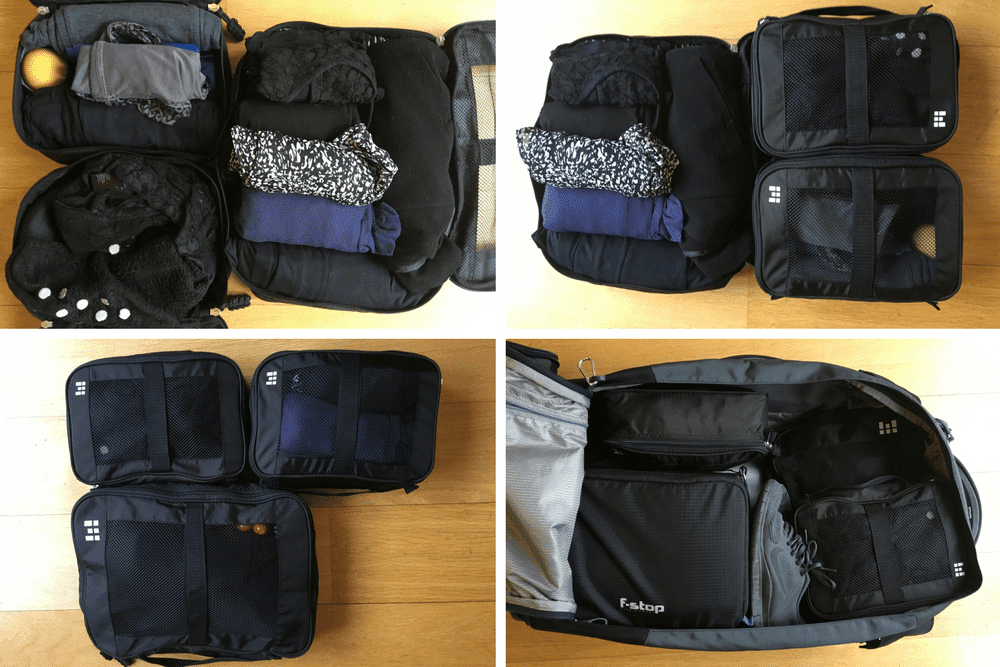
Packing Tips #2: Ignore Rule 1 If You Have Clothes That Wrinkle Easily
If possible, don’t pack things that need to be ironed. These days, it’s pretty easy to pick-up wrinkle free travel clothing: I travel with a crepe blazer that barely wrinkles, and have (female) friends that swear by merino wool dresses and skirts, like those made by Icebreaker or Ibex. For men, Wool and Prince makes button-down dress shirts made from wool, and Icebreaker has the Departure series of shirts, which are collared, button-down shirts, but with more of a casual look than the Wool and Prince version.
That said, sometimes you can’t avoid packing clothing that wrinkles. And for that, I’d advise folding those items, and either stacking them and putting them in a packing cube, or getting one of the packing envelopes made for keeping pressed clothing looking fresh straight from your suitcase.
Packing Tips #3: Use Containers, Packing Cubes, Bags, and Compartments to Organize Things
I’ve gone into more detail below about how using packing cubes has transformed my travel experience for the better, but in general, I think following the Benjamin Franklin rule of a place for everything, everything in its place will make your life way easier if you’re packing for a multi-destination trip. If you keep things relatively compartmentalized, you’ll be able to find things pretty easily, and you’ll be able to do it without making a massive mess out of all your other things. A few specifics:
- Use packing cubes for your clothing, underwear, sleepwear and exercise gear. Check out my strategies for grouping items within each packing cube below.
- Use pill containers, small pouches, and other packing hacks to organize jewelry and accessories. If you’re carrying several necklaces and are worried about tangling, wrap each one in plastic kitchen wrap to keep them separate or use straws. Keep earrings organized by storing them on a button. Put bobby pins in an empty TicTac container or, if you’re old school, one of those black containers film came in.
- Use old cosmetics bags, clear pouches and other bags to put like items together. For example, I use separate translucent or transparent pouches to separate my electronics cords and my hair-ties.
- Make an effort to keep electronics like hard drives and cords neat and organized, especially on flight days. For a time, it seemed like Geoff was getting pulled over every single time we went through airport security, because they simply couldn’t tell what everything was via X-Ray view. He got an electronics organizer to solve this tangle of cords, and ever since we’ve breezed through security. We use countless pouches and bags to keep our cords, travel adaptors, GoPro accessories, and whatever else all together and easy to see (for security) and find (for us).
It’s worth noting here that small containers are just as valuable as large containers, because they can fit into smaller spaces that would otherwise be wasted.
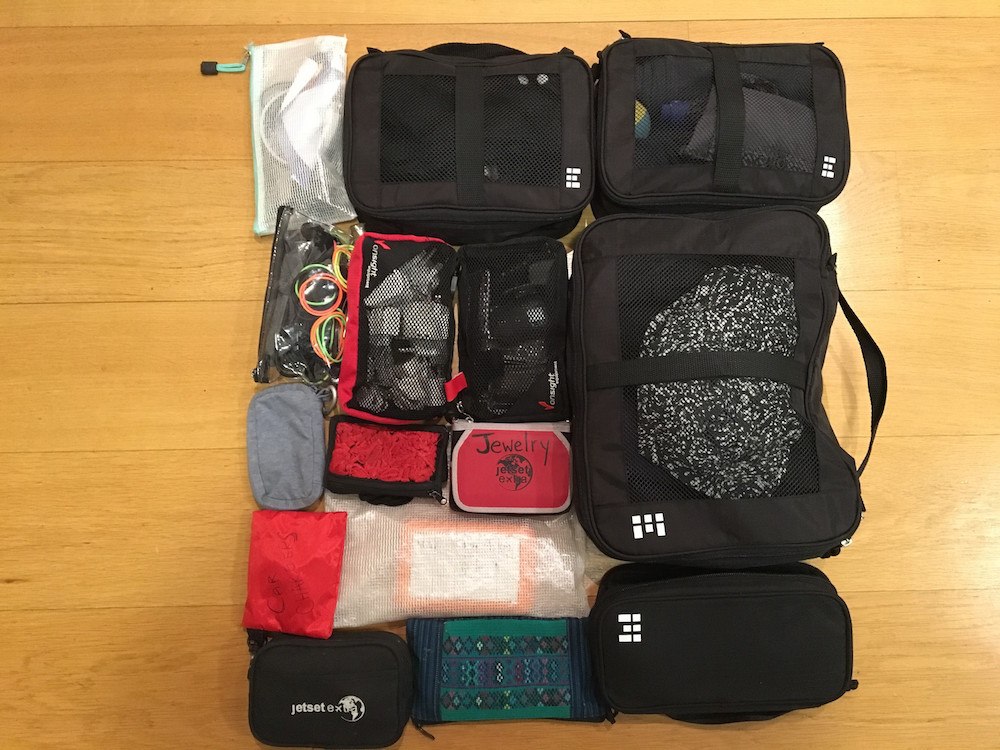
Packing Tips #4: Stuff Small Items Into Shoes To Save Space
Stuffing socks into your shoes is a good way to save space, but if you’re grossed out by putting clean socks in worn shoes, you can substitute it for anything that fits: I put nail polish into individual ziplock bags, and then stuff those into my shoes. Similarly, I’ll put (plastic-bag protected) travel-size toiletries in my shoes.
Which brings me to my next packing tip…
Packing Tips #5: No Matter What, Keep Things Clean And Prevent Leaks
A key component of staying organized is having everything stay clean and leak free – if your shampoo bottle springs a leak mid-flight, it doesn’t matter that your clothing is nicely organized in packing cubes: you’ll need to unpack and wash everything, and start again.
- To prevent leaks from shampoo bottles and other liquids in your bags, take off the cap and place a piece of plastic kitchen wrap over the top before replacing the screw top, and then put it in a sturdy zip-top kitchen bag.
- Use shoe bags or cheap shower caps (to go over the soles of your shoes) to keep the soles of your shoes from mucking up your other luggage.
- If you’re travelling with a bottle of wine in your checked luggage (for example, to bring home from Bordeaux or to take as a gift to a host), wrap it in a diaper, and then put it in a plastic bag. Diapers are – for obvious reasons – meant to be super absorbent, and will help soak up the majority of the liquid if disaster strikes. The plastic bag should prevent any liquid that makes it past the diaper from reaching your clothes. A simpler and cheaper solution than the travel protector products for wine bottles.
If you’re in the market for a new suitcase, I’d recommend looking for a bag that has a separate liquids pouch. It’s a feature I’d never thought of before, but now that I have it (on my Osprey convertible rolling suitcase), I love it.
Packing Tips #6: Pack Heavy Stuff Near The Bottom
If you have wheeled luggage, you’ll make your life much easier if you put your heaviest items — boots, books, etc. — closest to the wheels. It will make pulling the luggage easier on your arms.
If you have a backpack, put the heaviest items near the bottom and closest to your body to maximize the weight distribution for comfort.
Packing Tips #7: Consider What You’ll Do About Laundry
If you’re on a multi-destination trip, chances are you’ll have to carry dirty clothing at some point. If you have the space, bring a shoe bag or reusable grocery bag to stuff separate dirty clothing. If you don’t have the space, I recommend turning used clothing inside out, and then rolling it up and keeping it in the same place as your clean clothing. For socks, which get a bit stinkier, I keep them in a separate zipped pocket in my bag.
If you’re concerned about smells, some travelers swear by packing a few dryer sheets in their suitcase to neutralize any dirty clothing / used shoe smell.
How To Use Packing Cubes
Despite the fact that most of our long-term traveller friends swear by packing cubes, we took a long time to start using packing cubes. I figured we’d been doing just fine with our packing habits up until that point, and that they’d add extra unnecessary weight and cost to trips.
Now that I’ve started using packing cubes, however, my mind is completely changed. I’ve been using them for about a month, and have done five packs using the cubes: Edinburgh to Barcelona; Barcelona (house) to Barcelona (hotel); Barcelona to Nijmegen (Netherlands); Nijmegen to Amsterdam; and Amsterdam (hotel) to Amsterdam (house).
This means I’ve been able to try them out for about double the length of a standard two-week vacation, and I’ve also tried using them for two different types of travel: settling in for a long-stay in one place, and moving from city-to-city.
The cubes I’m using are from Zero Grid, and are sold in a set of 1 large and 2 small packing cubes, plus a shoe bag, for between US $30.00 and $45.00, depending on the time of year (they seem to be on sale right now at $29.95, which I’d guess is for Christmas).
Using Packing Cubes For A Long-Stay in One Place
My first pack with the packing cubes was in Scotland for a trip to Barcelona, where we planned to stay in the same apartment for 9 days. I knew that once we got to Barcelona, I’d be able to completely unpack, and then re-pack before we moved onward, so accesing one thing without distrubing everything else wasn’t an issue. Add to that, we had access to a washing machine and didn’t need to worry about carrying dirty clothing with us.
For this type of trip, I organized items like-with-like: the large packing cube was for my most commonly worn shirts, leggings and jeans. Exercise clothing and gear fit into one of the small cubes, and socks, underwear and sleepwear fit in the other small cube.
Once we arrived in Barcelona, I didn’t actually unpack until it was time to make our next move, and I wanted to re-roll and re-organize. For the duration of our stay in Barcelona, I simply unzipped the cubes and placed them on a table, and then grabbed the pieces I needed each day.

Using Packing Cubes For A Multi-Destination Trip
After our nine-day stay in Barcelona’s Gothic Quarter, we had a bit of a whirlwind scheduled: two nights in a hotel in Barcelona, followed by two nights in a hotel in Nijmegen, and then two nights in a hotel in Amsterdam. We knew we’d be outside alot, doing typical tourist things, and needed to last 6 nights/7 days without laundry. We also knew we’d probably be staying in pretty small hotel rooms (typical in Europe), and without much room to spread out and organize things.
For these trips, I changed my packing strategy: I packed all the clothing I knew I’d probably need in the large cube; the clothing I knew I probably wouldn’t need in one of the small cubes; and socks, underwear, and sleepwear in the other small cube (same as before).
This worked REALLY well, to be honest, because it meant I had a whole sub-section of my clothing that I never touched, didn’t have to re-pack, and didn’t have to think about from an organization point-of-view.
Our hotel room in Amsterdam wasn’t much larger than a closet, with the only storage under the bed. Rather than having to pull my suitcase out from under the bed everytime I needed anything, I just kept the packing cubes on a small ledge beside the bed, and was able to access them very easily.
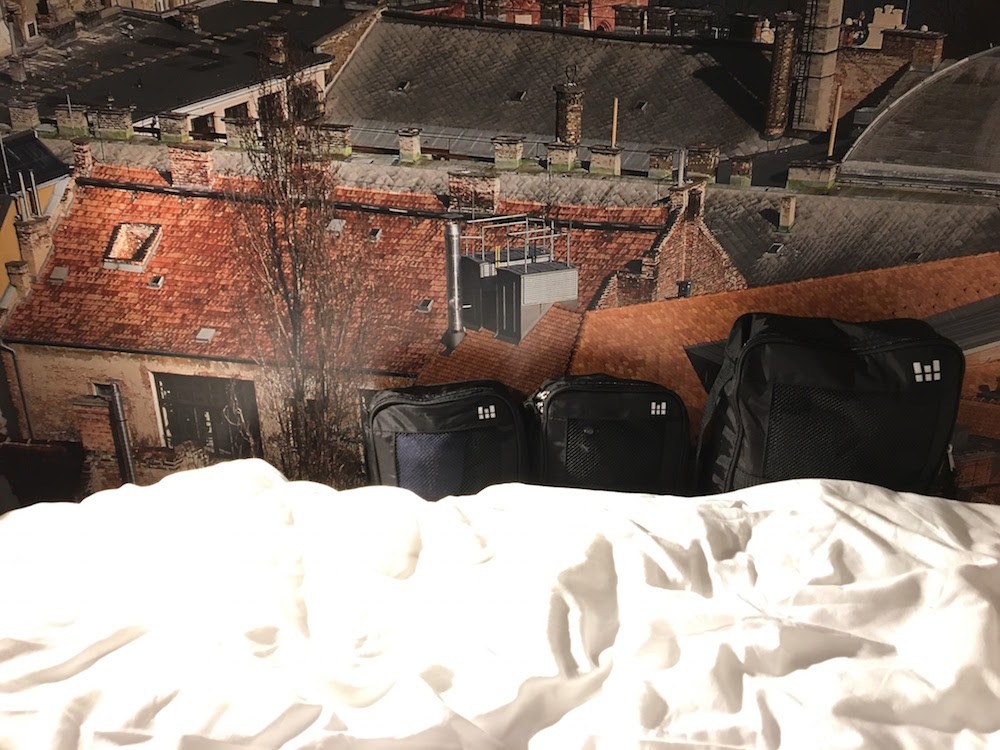
Zero Grid Packing Cubes Review
What About Zero Grid?
To be totally honest, I probably wouldn’t be using packing cubes right now if it wasn’t for Zero Grid — they reached out to us to see if we were interested in testing out some of their products, and since I’d be meaning to try packing cubes for years, I figured it was a great chance to see what the fuss is all about. But in all honesty, if Zero Grid hadn’t gotten in touch, it probably would have taken me another three+ years to get some.
So with that caveat out of the way, I’d like to set this review up with a bit of context. Below, there an Instagram picture I posted way back in 2012 that shows my packing (un)style in a pretty realistic way. The photos is super low quality and blurry, but I think it nicely illustrates the point: my bag is on the left, and Geoff’s is on the right. And as you can see, it looks like a bomb has gone off around my bag, and whereas Geoff’s bag is organized and impeccably neat and tidy.
Despite changing suitcases twice, and a significantly different travel style than in 2012, the whole “suitcase explosion” thing has been a constant with me as long as I’ve been travelling…until now. Packing cubes have changed this – they’ve defused the bomb, if you will.
Packing and unpacking is insanely easy now: it’s way faster, and is way more organized, both when I am in the hotel room, and when I’m packing-up to leave. Things are way easier to find and organize when we’re moving quickly, and the whole ‘bomb went off’ look from 2012 is no longer.
In case it isn’t clear, I’m totally convinced as to the value of packing cubes. So the question becomes, which packing cubes should you get? There are so many choices on the market – packing accessories seems like a pretty competitive industry – how do you decide which ones to invest in?
After using Zero Grids products for just under a month, I’ve outlined what I think are the positives and negatives of their packing cubes.
What I Love About the Zero Grid Packing Cubes
- They are really, really durable. I’ve seen packing cubes in the store made out of what feels like windbreaker material, and it’s hard to imagine how those would stand up to even short-term abuse. The Zero Grid cubes are made from ripstop nylon, with really durable stitching on the seams and zippers. I’ve been STUFFING mine far fuller than they should be stuffed, and they are standing up to the abuse.
- They have really thick zipper ties. This is one of those things you don’t think matters until your zipper pull falls off, as has happened to many of my travel bags. If you’re stuffing a bag full, you’ll probably have to make use of the zipper pull to actually zip it shut. And the stronger the zipper tie, the better it’s going to perform. The Zero Grid Cubes have really thick, woven cords that perform well under stress.
- They have a carrying handle on the top, and on the side. This makes it easier to grab and pull out of your suitcase, no matter how tightly it’s squished in, or what weird angle you have to grab it from (i.e., from under a bed in your train berth).
- They have a mesh window on the top of all three. This isn’t such a big deal with the big cube, but it helps you figure out what different items are in each of the small cubes without unzipping them.
- They come with a shoe bag. This one isn’t really a huge feature for me – it’s more like a nice extra than a must have. But the shoe bag has come in handy for laundry and separating muddy boots.
- They have a lifetime, money-back guarantee. When I was shopping for a new suitcase last Spring, one of the big factors that swayed me to Osprey was the lifetime, no-questions-asked guarantee. Osprey has a fantastic reputation for quality, but when things do go wrong, they stand by their products and their customers. For someone who travels as much as we do, this impressed me and made me feel like it was money well spent. Zero Grid seems to have a similar policy, offering a lifetime money-back guarantee.
Feedback On the Zero Grid Packing Cubes
Of course, nothing is absolutely perfect, and the Zero Grid packing cubes are missing a few features that — after using them for a month — I’d love to see in future versions.
- Color Coding. I’d love to see each cube made in a different colour or shade, which would give an added way to identify what’s inside each. For example, everyday clothing in the black cube, underwear in the grey cube, and workout gear in the blue cube. I don’t know if this is possible given they’re using a pretty specific fabric to maintain durability, but it’d be a nice added feature. That said, if I had to choose between the existing durability and colour coding, I’d side with durability every time.
- I wish there were more of them. I found I could use at least one more small cube and one more large cube (to make a set of five, not three). I believe the set of three would be perfect for a carry-on only bag, but I’d love the option to buy a set of five, as well. In fairness, part of Zero Grid’s brand is ‘minimalist travel,’ which I definitely haven’t mastered.
- They’re more expensive than some competitors. If you’re of the you get what you pay for school of thought, then this isn’t so much of a complaint as an observation. Yes – you can get packing cubes for far less than the everyday retail price of $44.95 that the Zero Grid version is selling for. It’s pretty easy to pick up more cubes for about half the price on Amazon. However, if you dig through the reviews (I try to sort reviews by “see all critical review”) you’ll probably find those cubes have some significant problems with durability. Bottom line: if you’re looking for some cubes to use once or twice, cheap might be the best way to go. If you’re looking to invest in packing cubes you can use over and over, abuse, and keep for multiple trips, it’s fair to pay more.
- They DO take up more space than no packing cubes. This is a general comment about using packing cubes vs. not, but I’ve found I can fit a bit less stuff in my bag when I use the packing cubes, because there are nooks and crannies between the cubes that don’t always get used. That said, I’ve found it’s worth the trade-off because things are so much more organized.
- They don’t ship internationally. Growing up in Canada in the 80s and 90s, it always felt like the US got all the coolest things way before us. To this day, Canadians go south of the border to shop at stores like Target, which we don’t have north of the border. So as a consumer, it sucks to see that a great product isn’t available outside of the United States. As a small business owner, however, I totally understand the company has to focus their resources on one of the biggest markets in the world. So, if you’re American, or have a US shipping address, Zero Grid seems like a great option. If you’re an international customer, you’re better of looking for a larger but respected brand, like Eagle Creek.
End of the Story
It’s pretty obvious I am now a fan of packing cubes, and now that I’ve seen the light, I don’t think I’ll travel without them. I’m interested to hear if you have any packing tips you use that I haven’t included here, or if you have any packing questions. Leave your tips, questions, and stories in the comments!
Like Our Packing Tips ? Pin them for later!

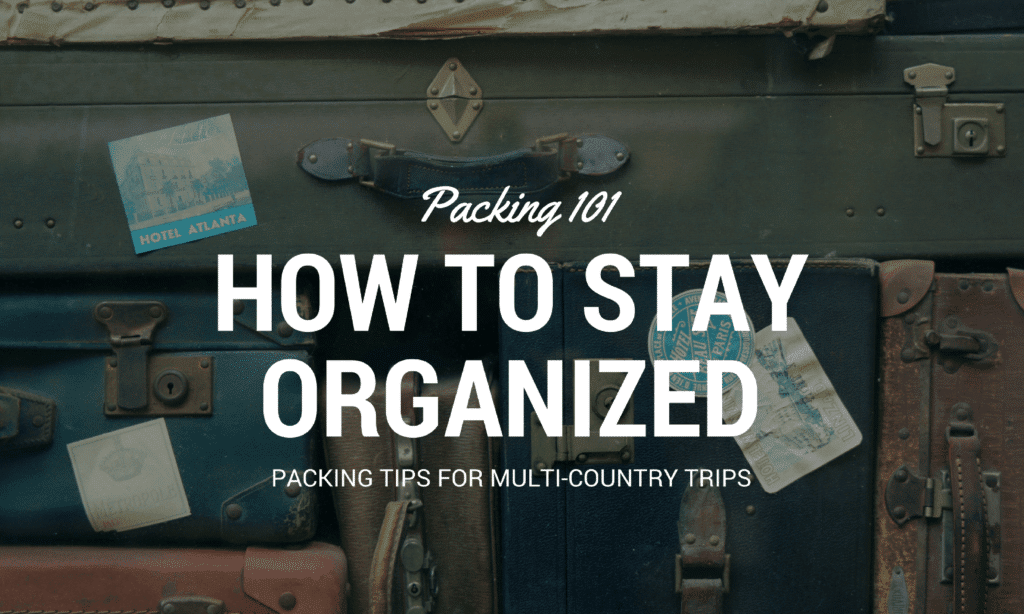
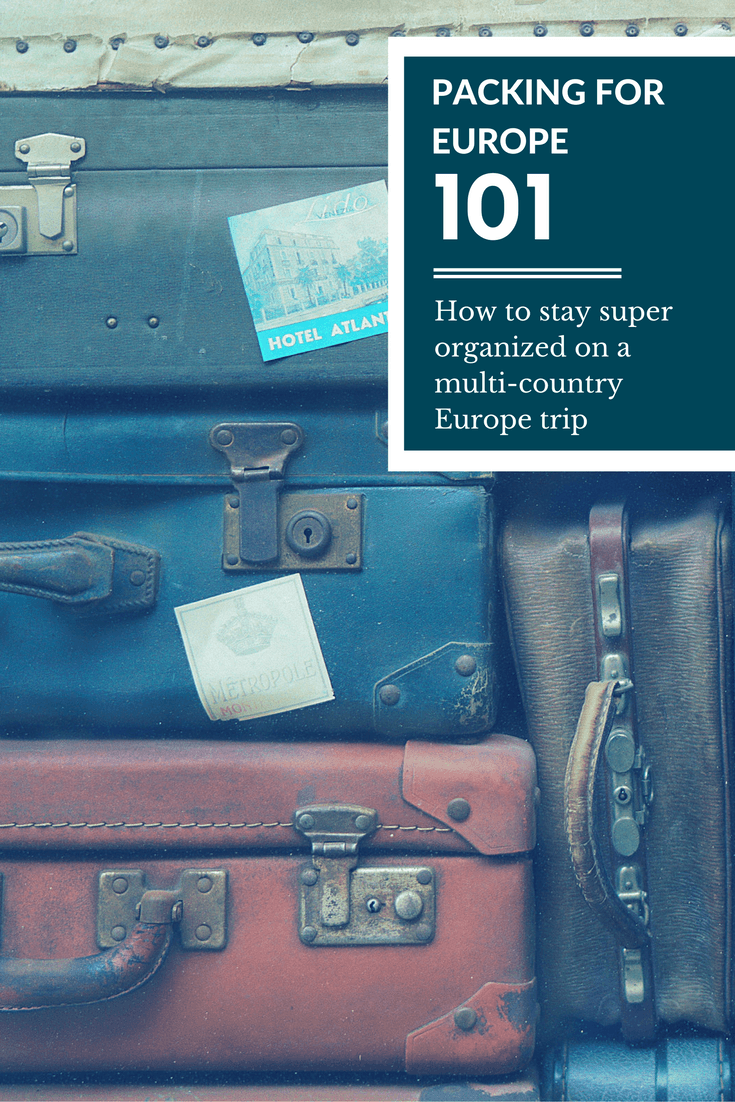
Rolling stuff when packing is an awesome idea. It can really save you a lot of space in your backpack. They see me rollin’ they hatin’ :)
Yes! Rolling is the best…as long as you don’t have easily wrinkled clothing :)